Summary
Created a device from ideation to working prototype which reduced neuromuscular deterioration for Parkinsons patients.
Role
Company
IBM
Duration
Background
UCSD Jacobs School Electrical and Computer Engineering Design Competition was a two-quarter long designathon where over a hundred students of diverse backgrounds were given the challenge of designing and implementing a solution to make the life of those affected by Parkinson's better.

Role
As a designer, I led my team which consisted of 3 engineers (2 Graduate students and 1 Freshman) through the Human-Centered Design process. I conducted contextual inquiries, field research, rapid prototyping, user testing, front end development (using EJS, Html, CSS) and even soldered the hell out of some electronics.
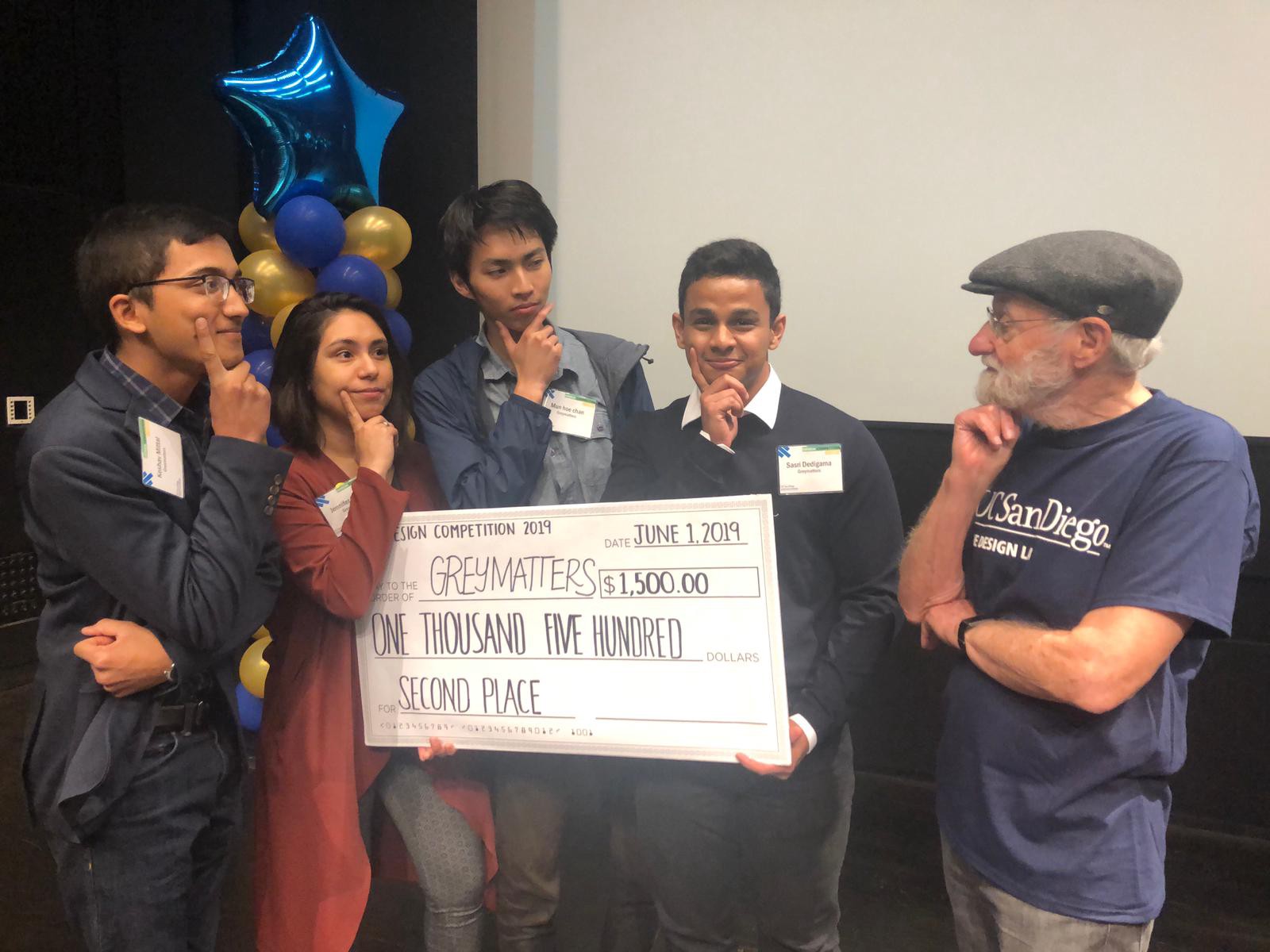
Need Finding
We started off by identifying the different pain points faced by those involved in Parkinson's we did this by conducting user interviews with an array of different people like Parkinson's Patients, Caregivers (Spouses and Certified Nurses) and Physicians. To help visualize our problem space we created an affinity diagram:
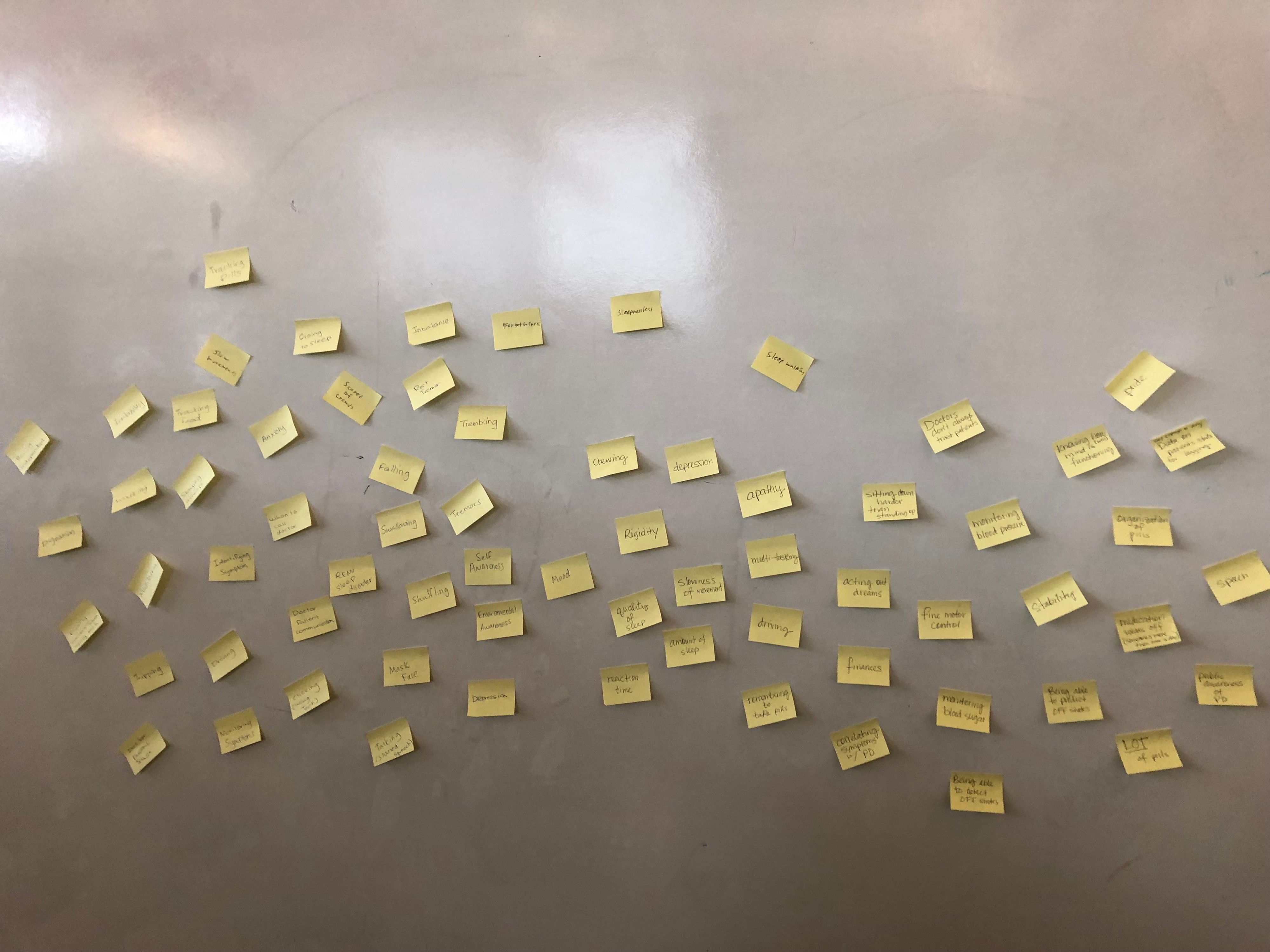
Immediately one thing we learned from the Affinity Diagram was that we needed BIGGER POST-ITS. :) (Lesson Learned)
We then started narrowing down the problems by categorizing them :
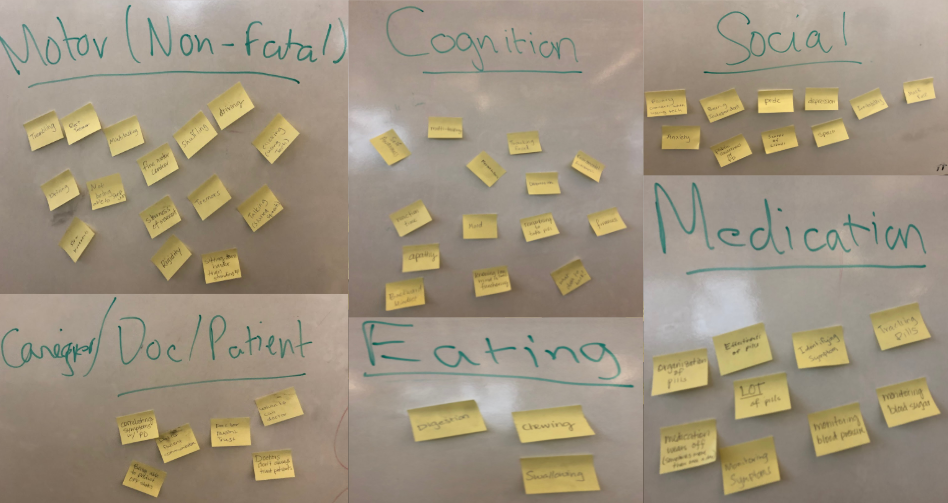
Unfortunately trying to solve all these problems would be nearly impossible therefore we each voted on 2 and narrowed it down to 3 problems that we would ideate around they were Stability, Data Collection, and Sleep.
Field Research
Before we started ideating we visited the BoxFit gym to verify some of the assumptions we did and also to immerse ourselves in the life of a Parkinson's patient.
Being in the BoxFit gym was a great experience the people I met there were some of the most lively and amazing people I’ve ever met. We really bonded at the gym and even got our own Boxing nicknames (Mine was HOT SAUCE).
From our gym experience, we learned many things some of the most significant were;
- Visual cues: hands as punching targets, pool noodle/foot for stepping: visual cues help patients identify where the next step is or what action is required of them.
- Auditory cues: “Left right left right”, “1 2 1 2 3 3”: This helps guide the patients through the exercises by allowing them to get used to a pattern or rhythm.
- Haptic cues: tapping the foot: Haptic cues help patients with severe Parkinsons identify which muscles are required for a movement.
- Multitasking to improve cognition: Besides boxing, the exercises also involved a lot of multitasking to keep the minds sharp and improve cognitive ability like doing math problems while punching a boxing bag.
- Verbal exercises to reduce the loss of voice: One huge drawback of Parkinson's is the loss of voice, therefore, to prevent this, patients had to yell during some exercises.
Another observation we made while interacting with the boxers was that there are categories of Parkinson's, I like to sort it to 3 main categories:
- Light Parkinsons: Early stages of Parkinson's. Only shows light tremors in hands.
- Moderate Parkinsons: Here Patient has other symptoms like shuffling, harder tremors, occasional masked face and some trouble with voice.
- Severe Parkinsons: Freezing, heavy tremors, incomprehensible speech, masked Face.
The most important thing we learned though was that exercise reduces the time it takes for patients to get from light to severe Parkinsons. From our interviews and research exercise has been proven to strengthen the mind boy connections and therefore reduce and at times halt the progress of neuromuscular deterioration.
We removed sleep from the needs because it seemed to be addressed pretty well with the apple watch and also because it was not linked to stability.
Problem Statement

This problem is specifically targeted towards patients who can’t make it to exercise classes or who can’t afford it but still want to exercise at home.
Ideation and Prototyping
We started ideating around something that would provide relevant cues for patients to do a certain action, especially patients with severe Parkinson's.
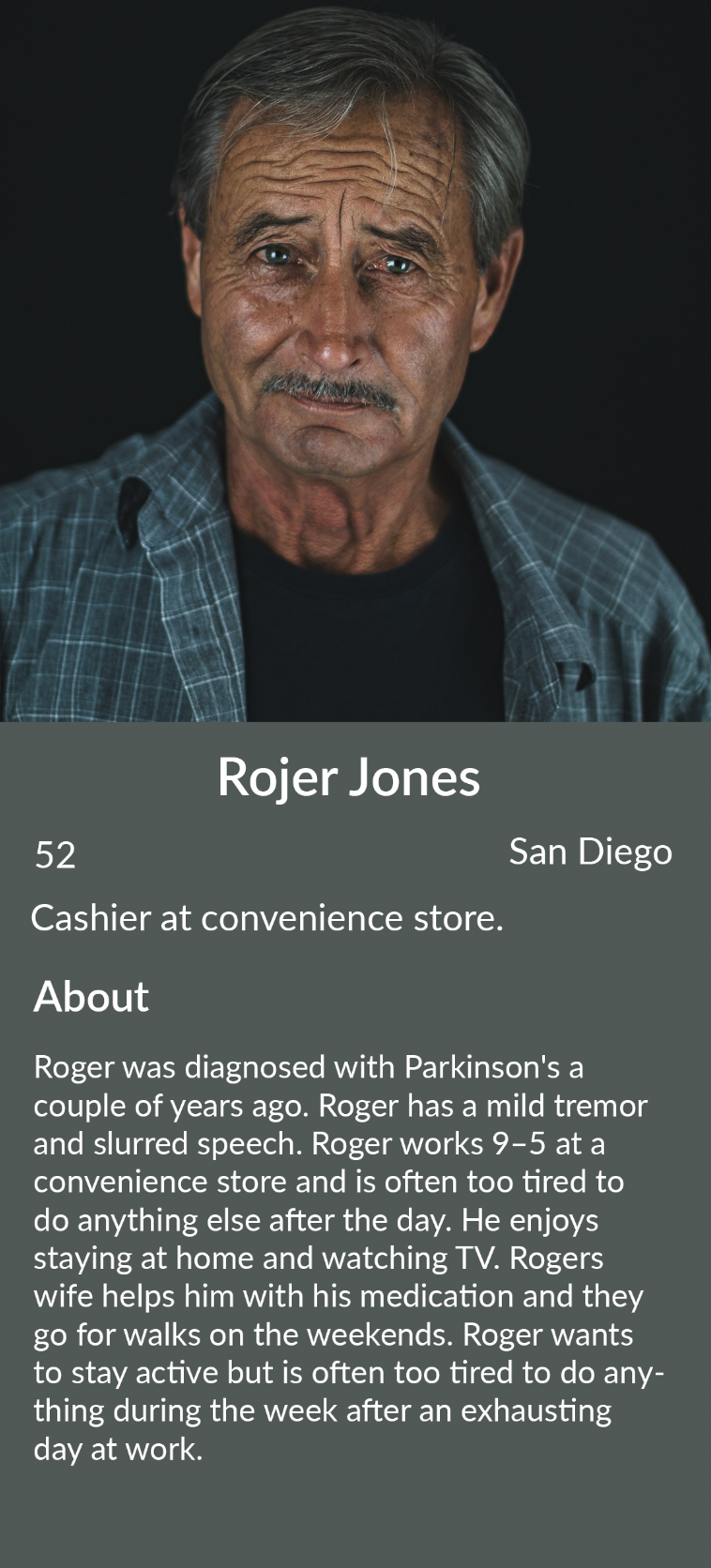
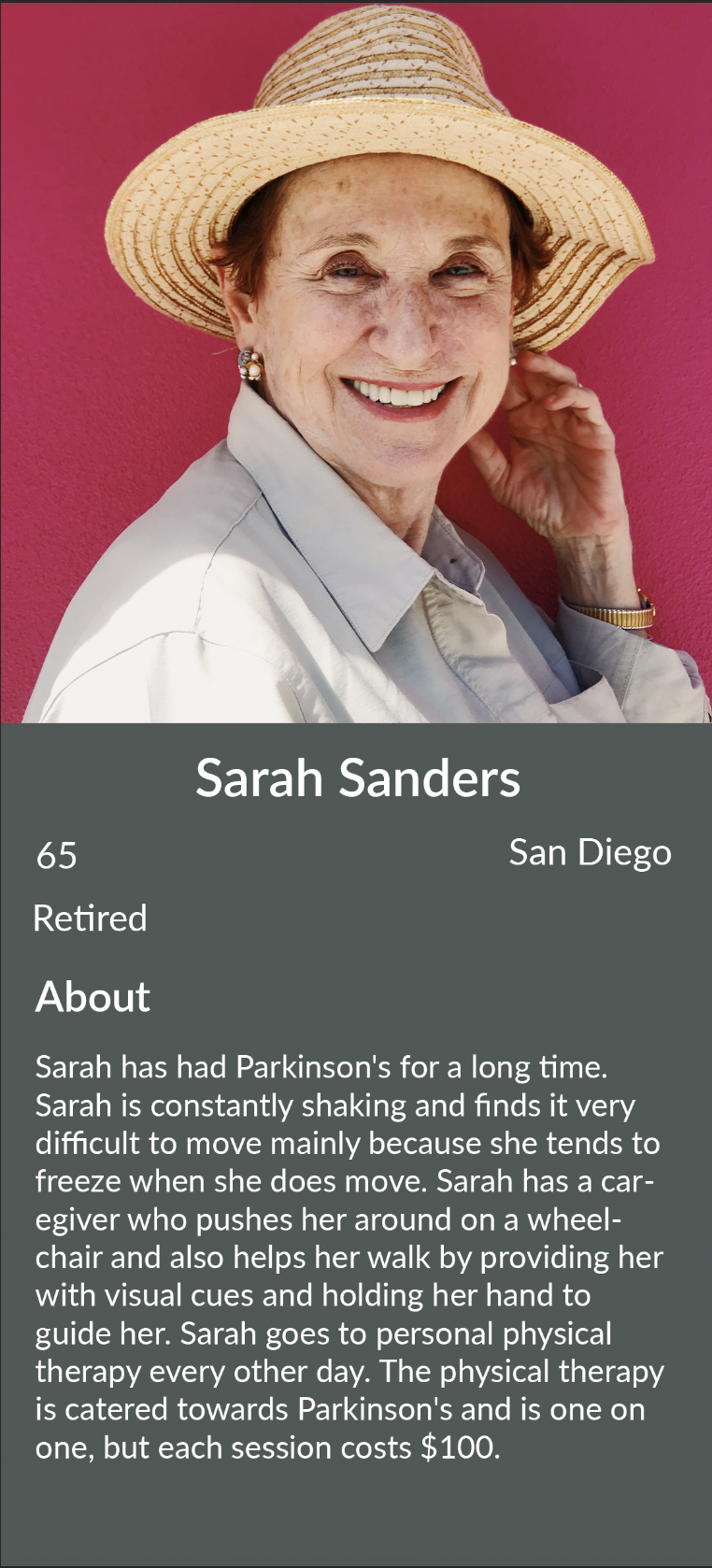
Prototyping: Iteration 1 (Lo-Fi Prototype)
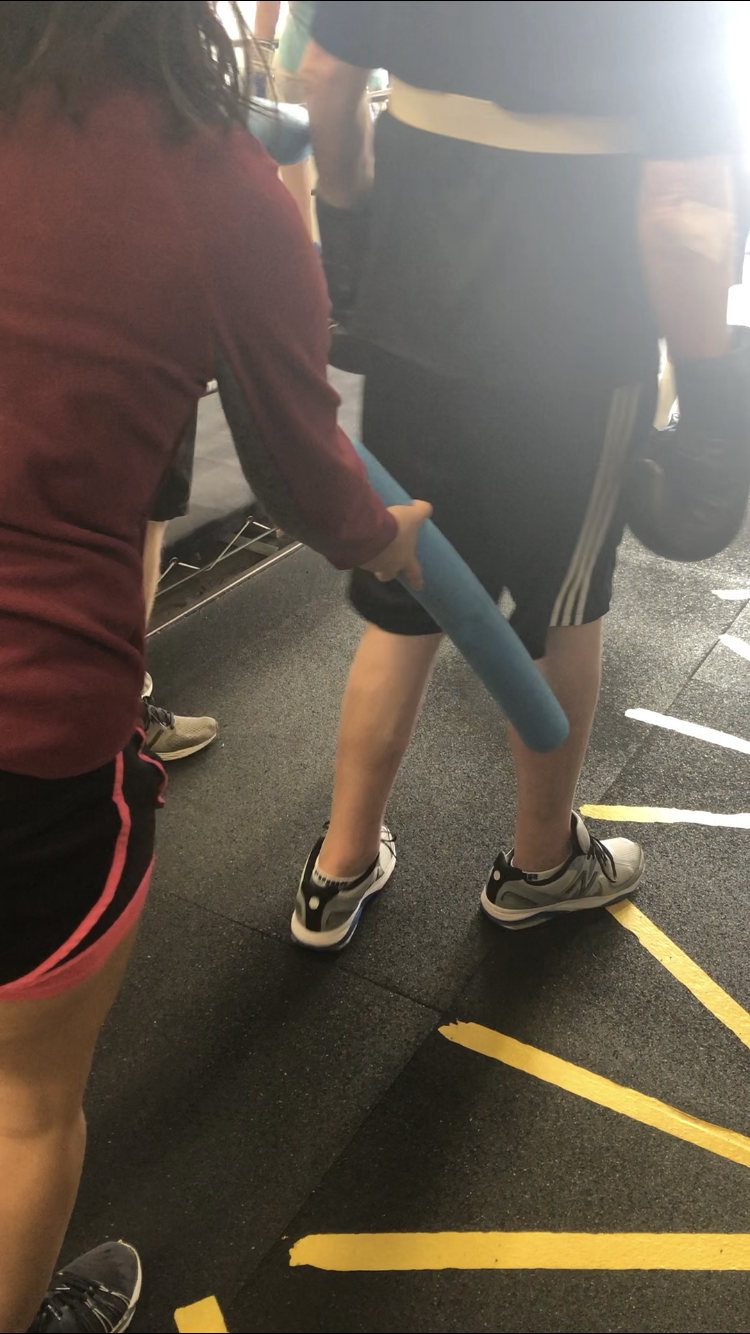
Method
- Placed pool noodle in front of patients as a visual cue for walking
- Used pool noodle to tap some muscles relevant to walking (i.e. calf, hamstring, glute) in an appropriate sequence
- Gave vocal cues relevant to different movements (i.e. walking, punching, footwork exercises) either using “left” and “right” or number counts
Feedback and Findings
- Patients were very responsive to vocal cues especially numbers.
- Visual cues weren't as effective and were harder to simulate using lo-fi methods.
From prototyping, we also realized that our idea can be further expanded. We can build a device that not only provides cues to do simple actions but provide cues to guide Parkinson's patients through an exercise.
Prototyping: Iteration 2 (Hi-Fi Prototype)
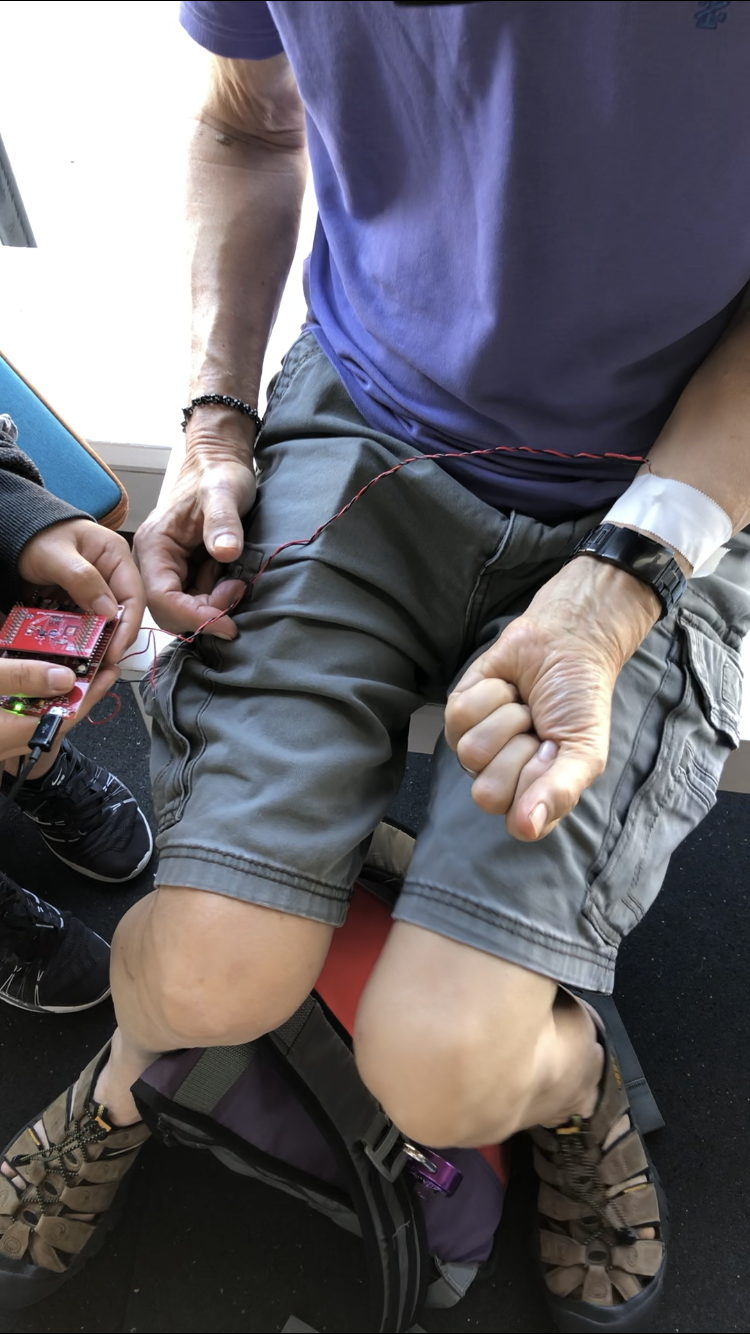
Method
- Place motors on legs or arms and see if the patient reacts to vibrations and can match the timing of movements
- Add vocal cues and evaluate in the same way
- Adjust the speed from patient feedback
Feedback and Findings
- The patient tends to start off time but improves in the same session
- Audio cues are important to maintaining concentration
- Stronger vibration would be helpful.
Prototyping: Iteration 3 (Hi-Fi Prototype)
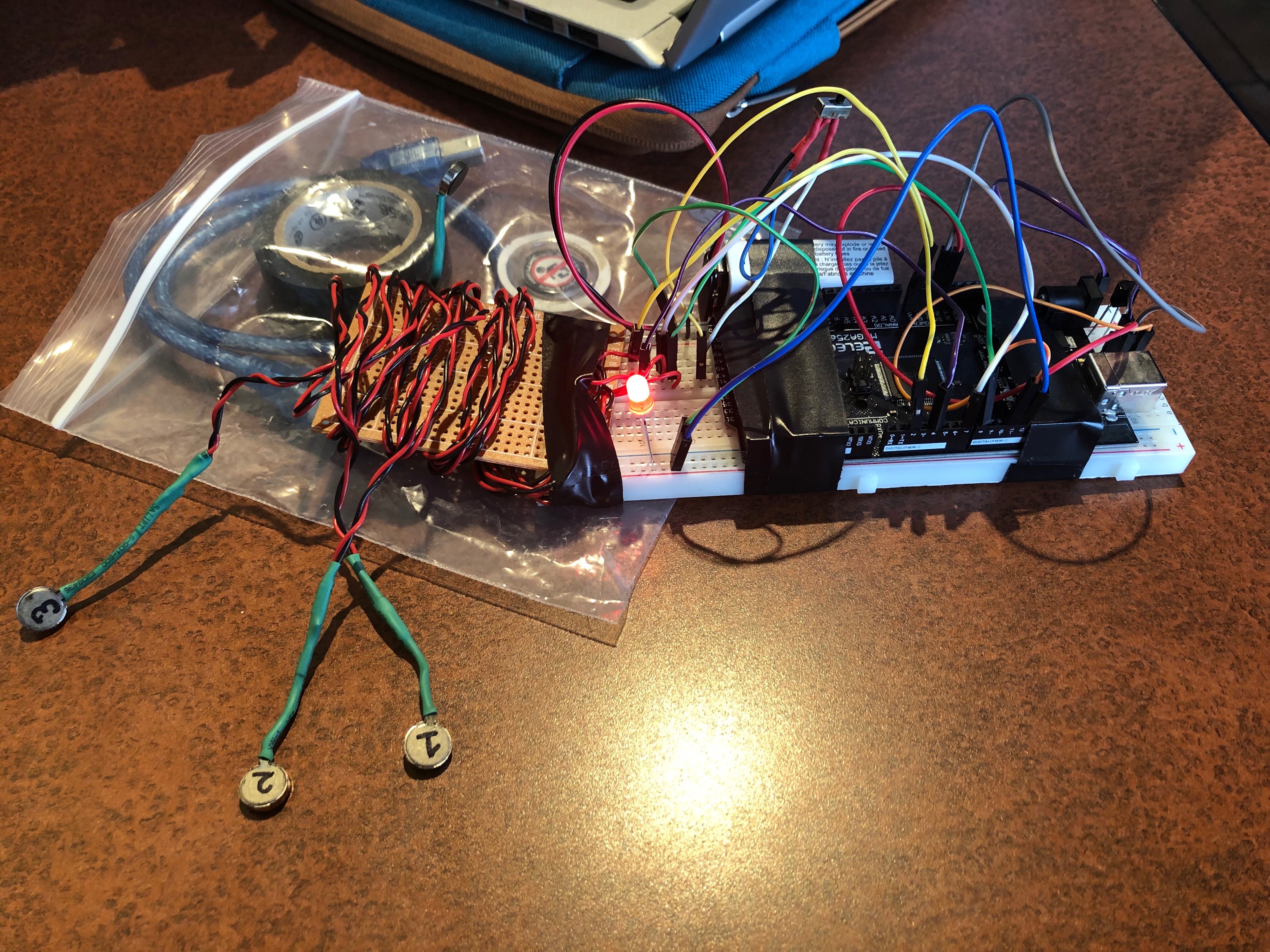
Method
- Place motors on appropriate muscles required to simulate a certain movement such as the back, tricep, and hip for punching.
- Add vocal cues and evaluate in the same way. Test with different types of vocal cues L/R, 12345 and no vocal cue.
- Adjust the speed from patient feedback.
Feedback and Findings
- The patient tends to start off time but improves in the same session.
- Numbered cues work better than left, right as it simulates muscle movements.
Final Implementation
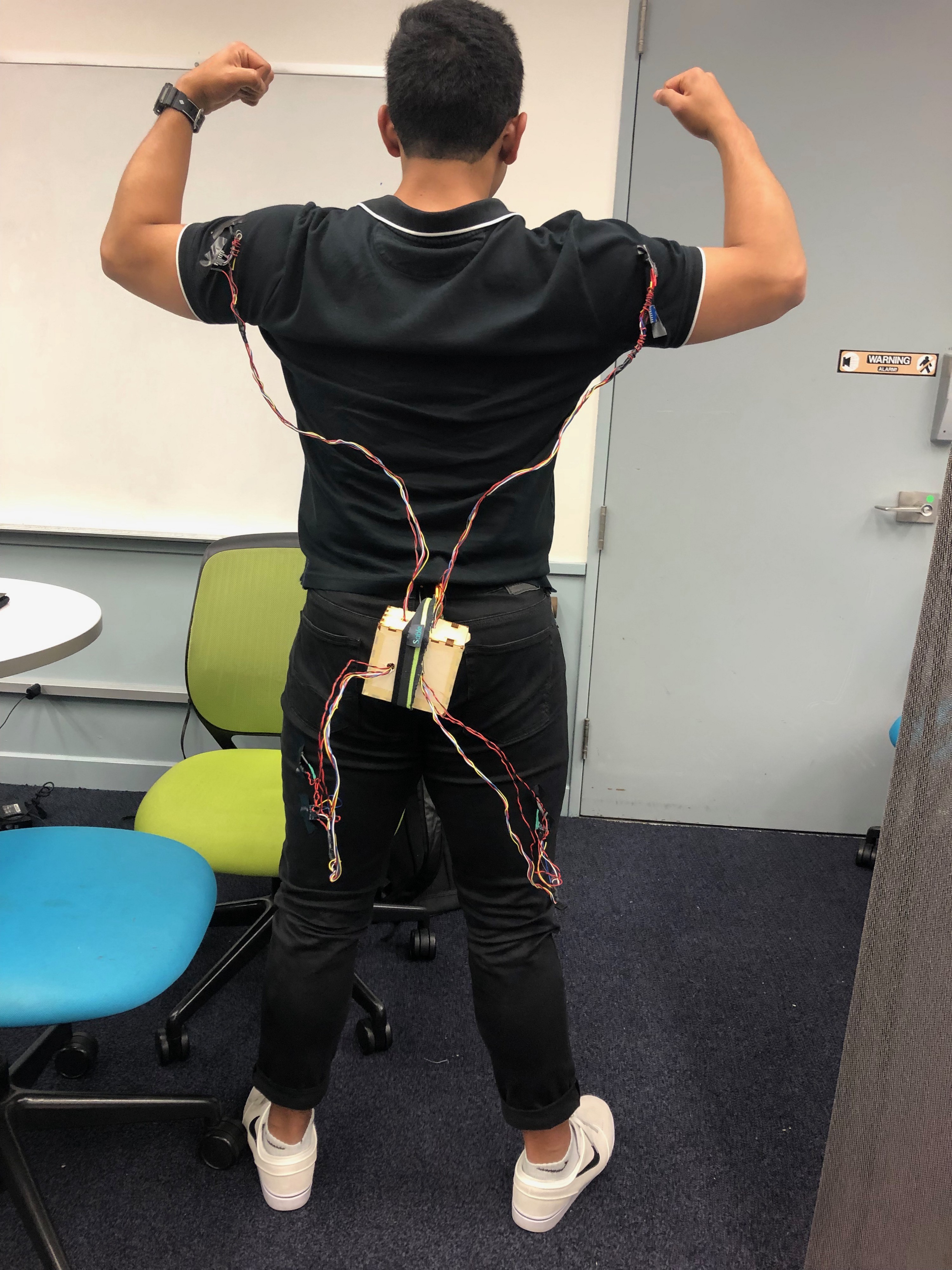
1. 6 motors, 4 sensors (gyroscope and accelerometer), audio playback
2. A web application which includes custom exercise modules
3. Microcontroller connects between a web app and sensors
How does it work?
You would log into the app, choose a module, follow a tutorial that will teach you how to and where to place the motors. Once calibrated you can start your exercise, the motors would stimulate the appropriate muscles required for the movement and the audio tell you what is required. The gyroscope would let you know if you have done the action properly. The app would also provide summary feedback on how you have progressed over the course of time.
Future Improvements
- Go wireless with Bluetooth technology
- Possibly switch out vibrations with electrical stimulation if more intensity is desired
- Make overall casing more compact and portable.
- Make sensor and motor more user-friendly and less obtrusive by embedding into clothing
